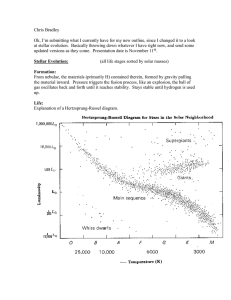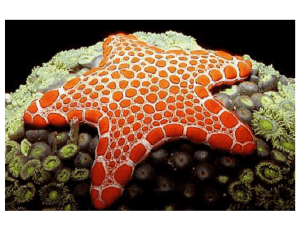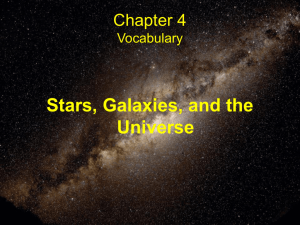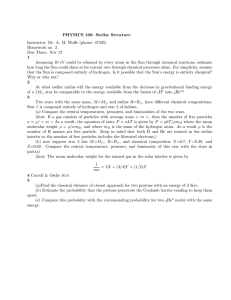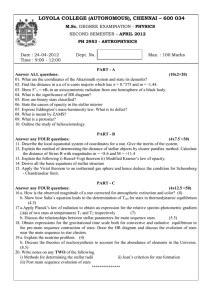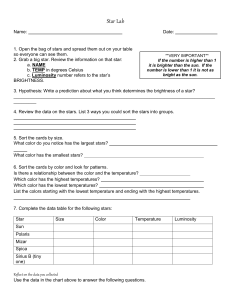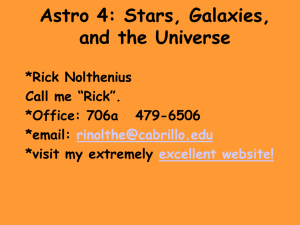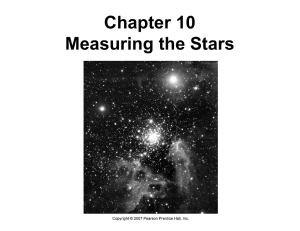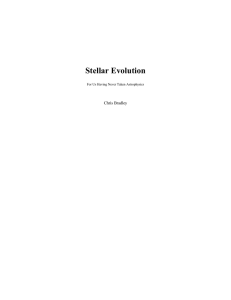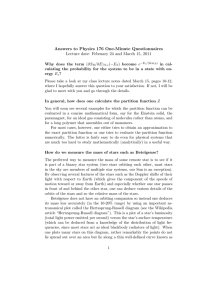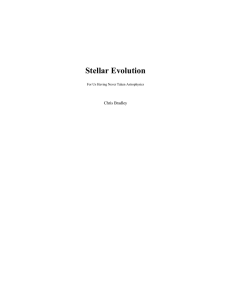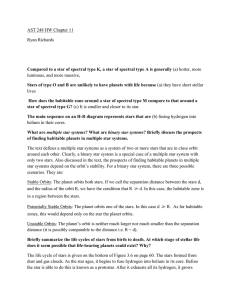Problem Set 1
advertisement
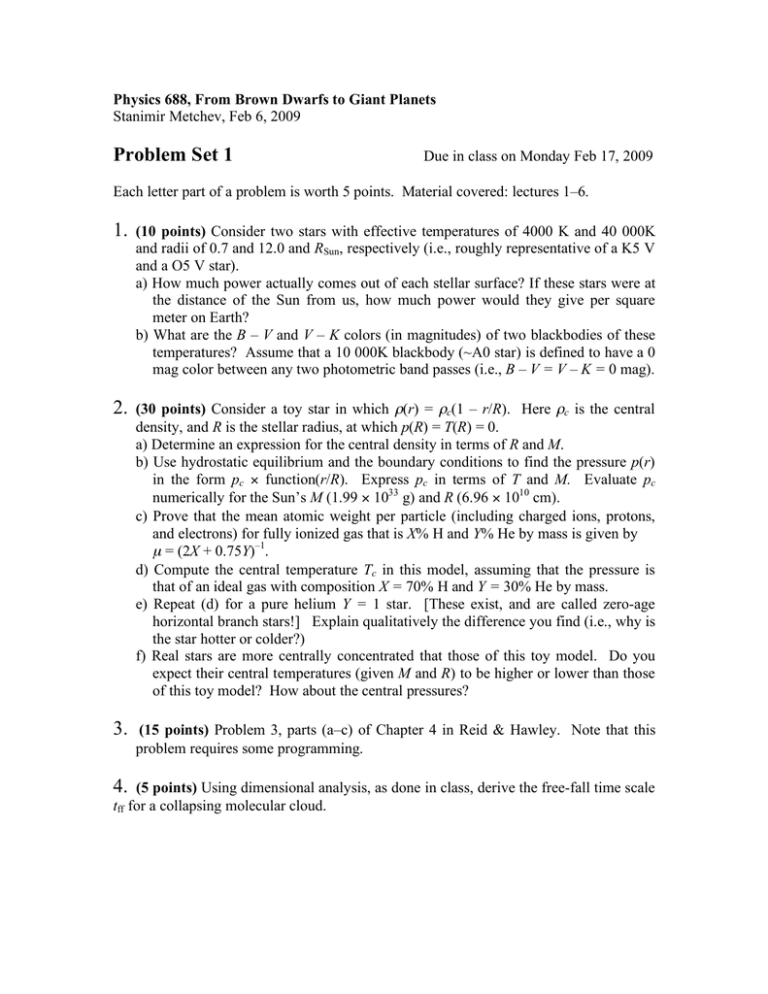
Physics 688, From Brown Dwarfs to Giant Planets Stanimir Metchev, Feb 6, 2009 Problem Set 1 Due in class on Monday Feb 17, 2009 Each letter part of a problem is worth 5 points. Material covered: lectures 1–6. 1. (10 points) Consider two stars with effective temperatures of 4000 K and 40 000K and radii of 0.7 and 12.0 and RSun, respectively (i.e., roughly representative of a K5 V and a O5 V star). a) How much power actually comes out of each stellar surface? If these stars were at the distance of the Sun from us, how much power would they give per square meter on Earth? b) What are the B – V and V – K colors (in magnitudes) of two blackbodies of these temperatures? Assume that a 10 000K blackbody (~A0 star) is defined to have a 0 mag color between any two photometric band passes (i.e., B – V = V – K = 0 mag). 2. (30 points) Consider a toy star in which ρ(r) = ρc(1 – r/R). Here ρc is the central density, and R is the stellar radius, at which p(R) = T(R) = 0. a) Determine an expression for the central density in terms of R and M. b) Use hydrostatic equilibrium and the boundary conditions to find the pressure p(r) in the form pc × function(r/R). Express pc in terms of T and M. Evaluate pc numerically for the Sun’s M (1.99 × 1033 g) and R (6.96 × 1010 cm). c) Prove that the mean atomic weight per particle (including charged ions, protons, and electrons) for fully ionized gas that is X% H and Y% He by mass is given by µ = (2X + 0.75Y)–1. d) Compute the central temperature Tc in this model, assuming that the pressure is that of an ideal gas with composition X = 70% H and Y = 30% He by mass. e) Repeat (d) for a pure helium Y = 1 star. [These exist, and are called zero-age horizontal branch stars!] Explain qualitatively the difference you find (i.e., why is the star hotter or colder?) f) Real stars are more centrally concentrated that those of this toy model. Do you expect their central temperatures (given M and R) to be higher or lower than those of this toy model? How about the central pressures? 3. (15 points) Problem 3, parts (a–c) of Chapter 4 in Reid & Hawley. Note that this problem requires some programming. 4. (5 points) Using dimensional analysis, as done in class, derive the free-fall time scale tff for a collapsing molecular cloud.
